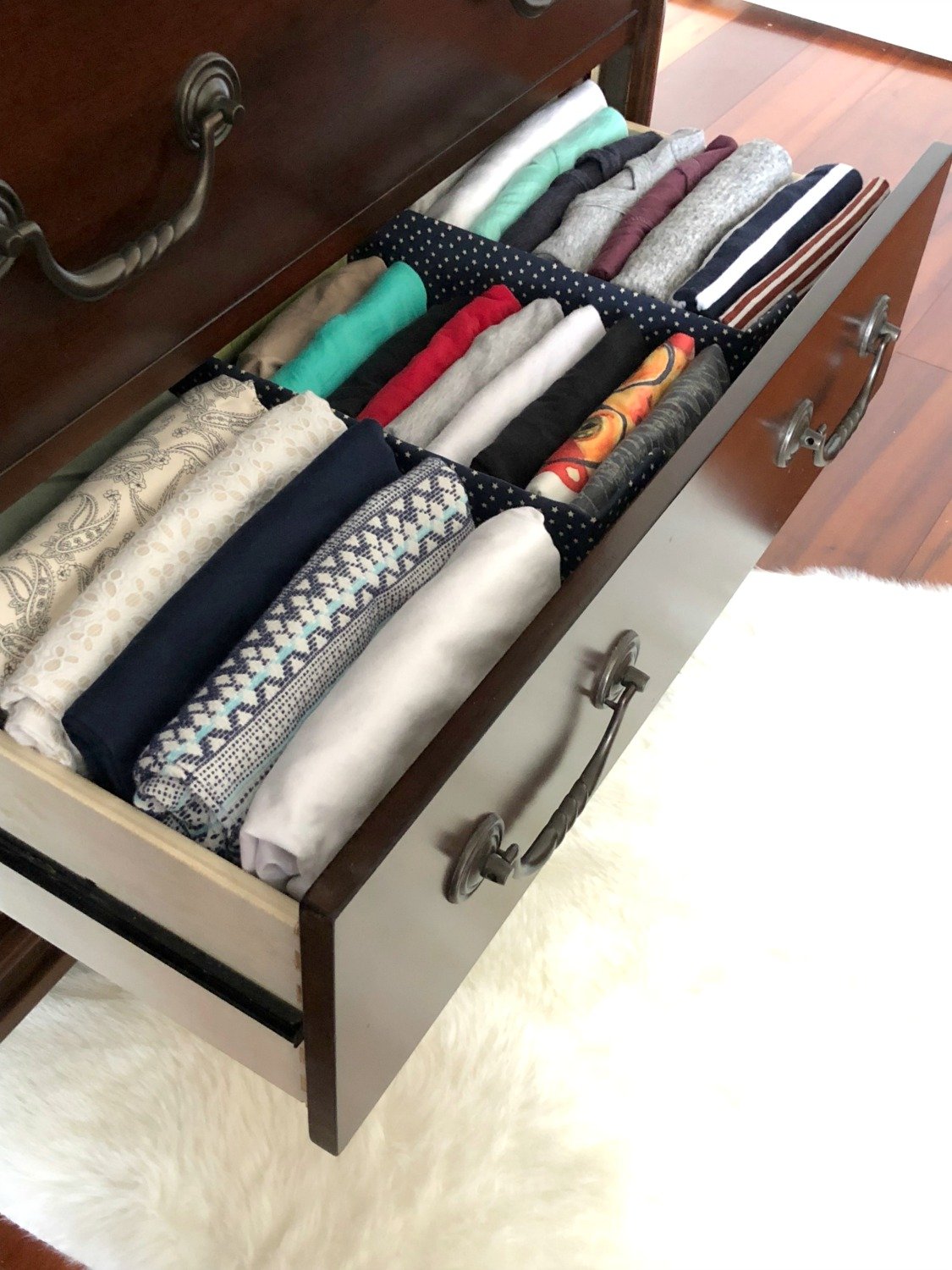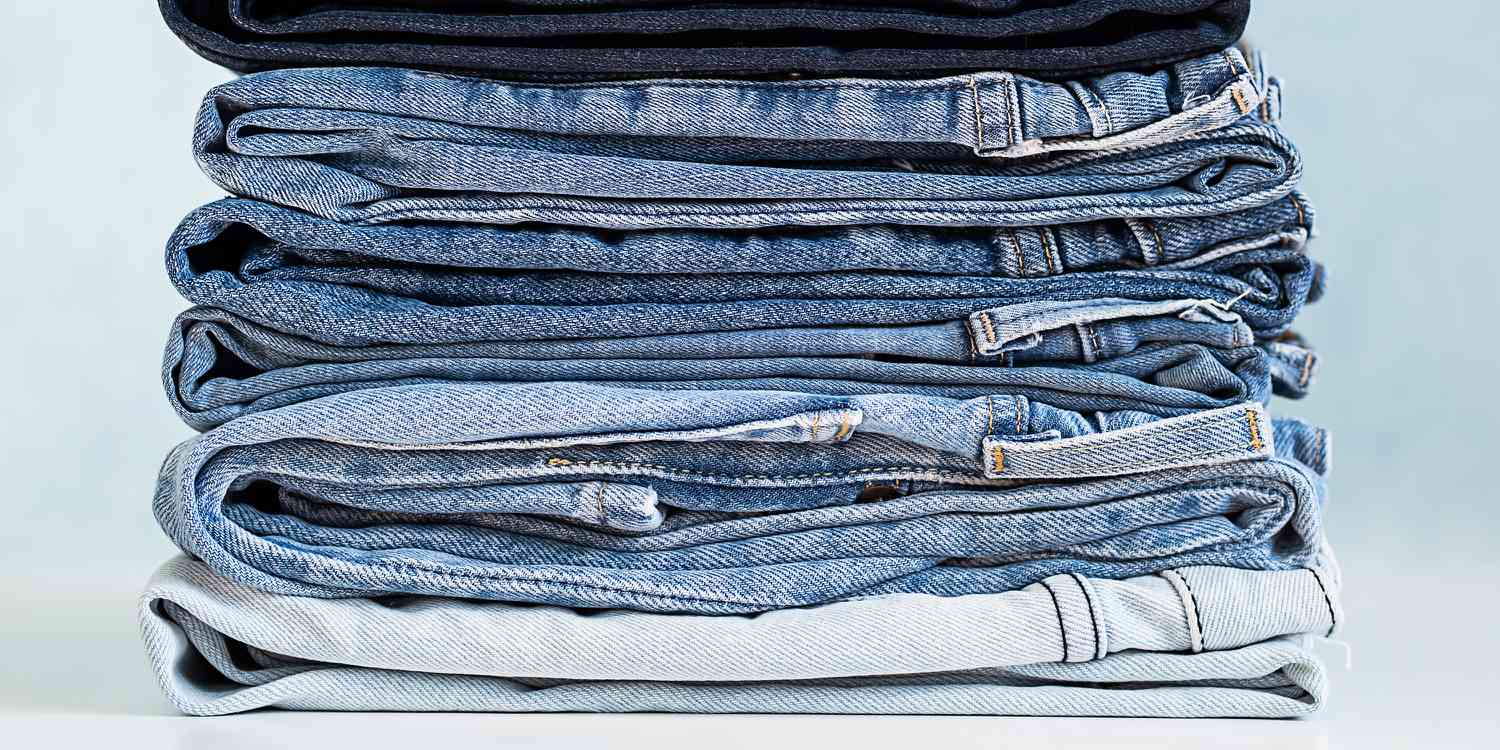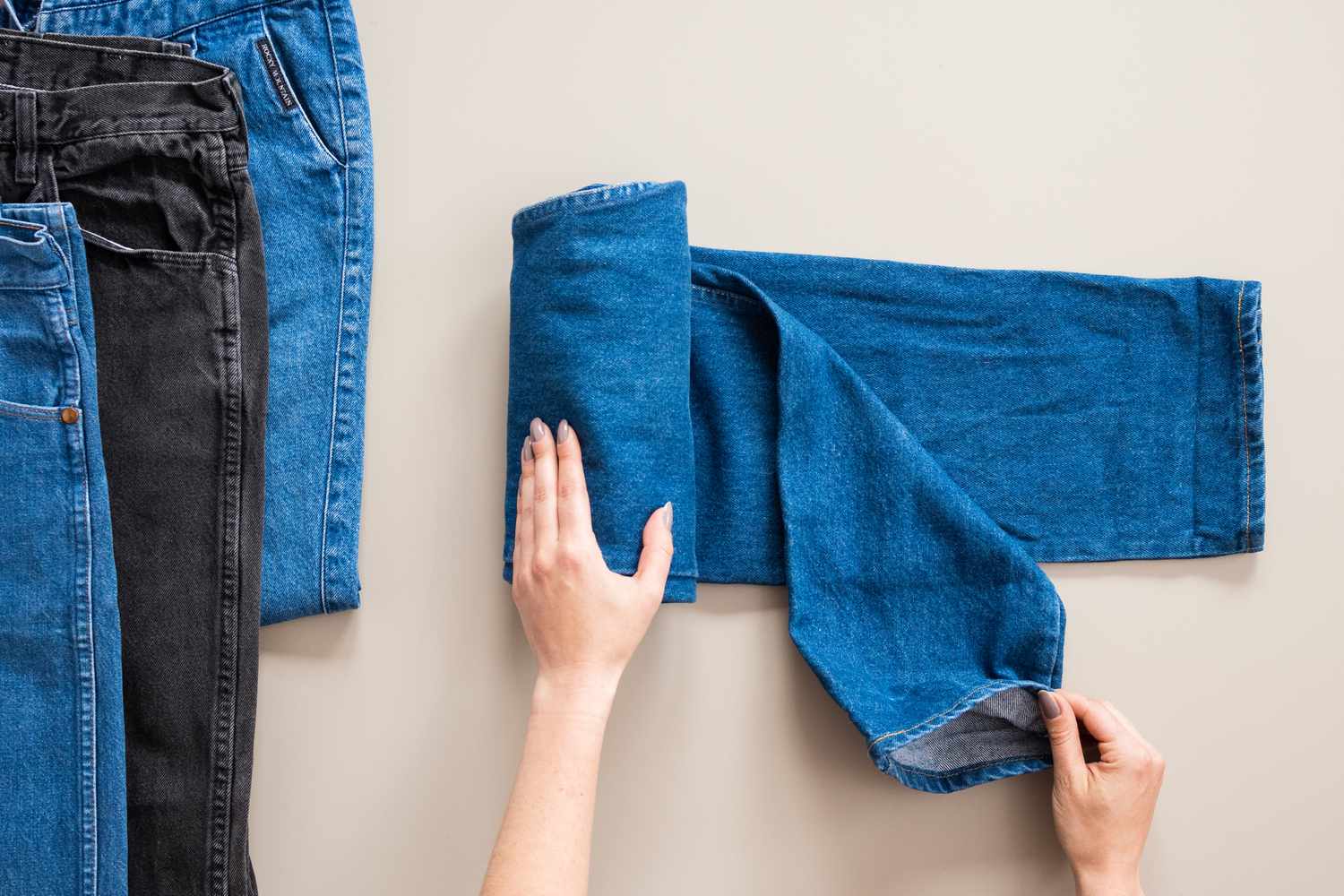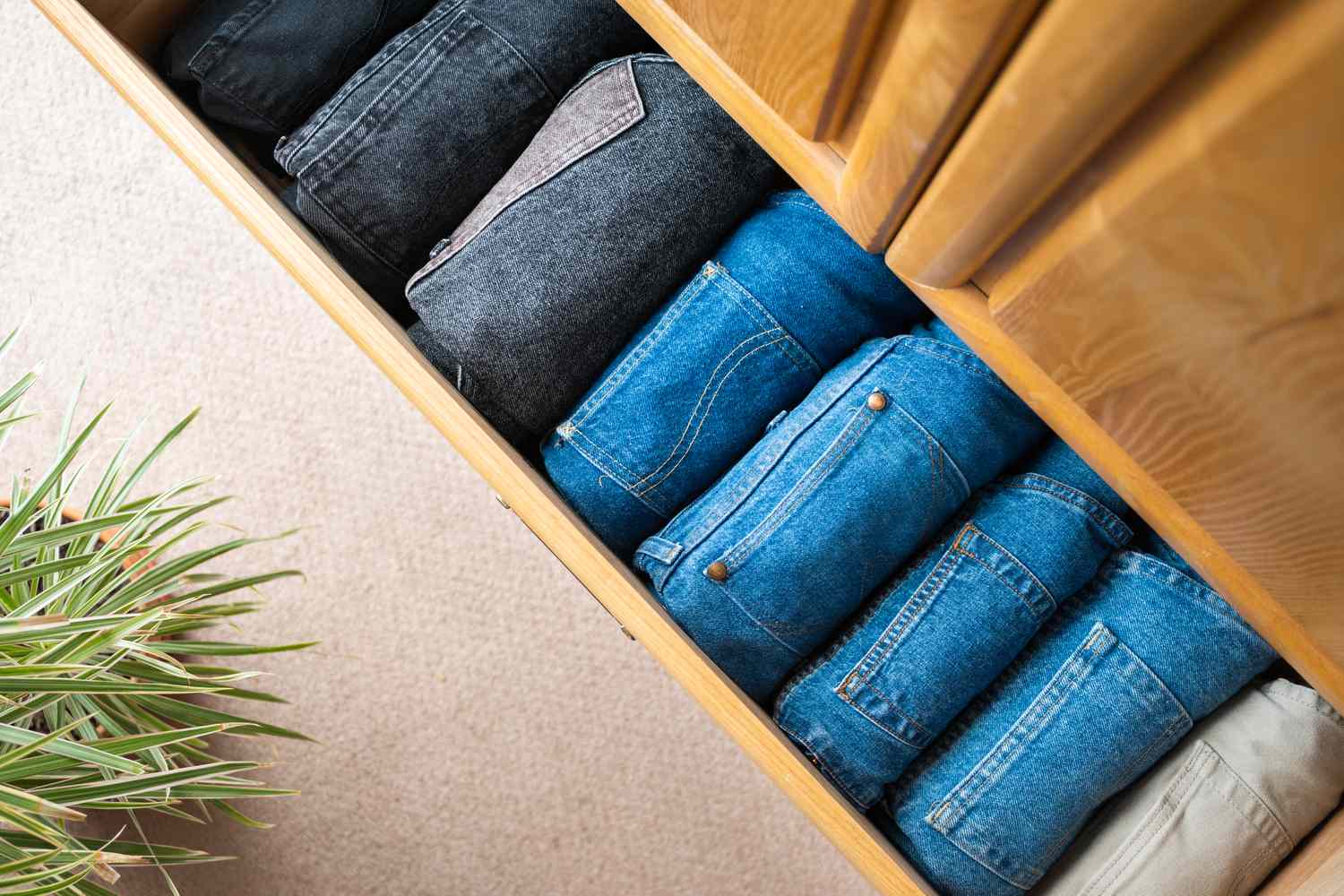
In the realm of wardrobe organization, taming the denim pile often poses a daunting challenge. Jeans, with their varied styles and tendency to wrinkle, can quickly transform a neat drawer into a jumbled mess. However, with a few simple folding techniques and a touch of organizational finesse, you can transform your jean drawer from a chaotic abyss into a haven of order and efficiency.
Contents
- Essential Supplies and Preparations: Setting the Stage for Folding Success
- Preparing the Jeans for Folding: Ensuring a Smooth Process
- Basic Folding Technique: The Classic Method for a Neat and Compact Result
- Variations on the Basic Fold: Adapting to Different Styles and Drawer Sizes
- Additional Tips for Effective Folding: Maximizing Organization and Preservation
- Folding Jeans for Different Drawer Sizes: Adapting to Your Storage Needs
- Folding Jeans for Different Jean Styles: Embracing Versatility
- Considerations for Long-Term Storage: Preserving Your Denim Investments
- A Well-Organized Drawer, a Well-Organized Life
- Additional Tips and Tricks: Optimizing Your Denim Drawer
- Beyond Folding: Expanding Your Denim Storage Options
- Embrace the Joy of Organization: Cultivating a Sustainable Wardrobe
Essential Supplies and Preparations: Setting the Stage for Folding Success
Before embarking on your jean-folding journey, ensure you have the necessary tools at hand:
-
A flat surface: A spacious and stable surface will provide the ideal workspace for folding your jeans without compromising precision.
-
A pair of jeans to be folded: Each jean will serve as a canvas for your folding artistry, transforming from a wrinkled garment into a neatly organized piece.
Preparing the Jeans for Folding: Ensuring a Smooth Process
To ensure a smooth and wrinkle-free folding experience, follow these simple steps:
-
Clean and dry jeans: Start with clean and dry jeans, as any dirt or moisture can hinder the folding process and potentially damage the fabric.
-
Pocket removal: Remove any pockets or accessories from the jeans, as these can add bulk and make folding more challenging.

Basic Folding Technique: The Classic Method for a Neat and Compact Result
The basic folding technique is a versatile method suitable for a variety of drawer sizes and jean styles:
-
Lay the jeans flat: Spread the jeans out evenly on the flat surface, ensuring the legs are aligned and the waistband faces up.
-
Fold one leg over the other: Align the seams of the legs and fold one leg over the other, creating a crease down the center.
-
Fold the legs in half: Bring the bottom hem of the folded legs up towards the waistband, creating a second crease.
-
Fold the waistband over: Fold the waistband down towards the hem of the folded legs, creating a third crease.
Variations on the Basic Fold: Adapting to Different Styles and Drawer Sizes
While the basic folding technique is a solid foundation, variations can accommodate different drawer sizes and jean styles:
-
Shallow drawers: For limited drawer space, fold the jeans in thirds instead of half, creating a more compact form.
-
Bootcut or flared jeans: For wider-leg jeans, fold the legs inwards towards the center crease before folding in half. This prevents the excess fabric from bulging.
-
Rolling jeans: For compact storage, tightly roll the jeans from the bottom hem towards the waistband. This method is ideal for travel or when space is at a premium.
Additional Tips for Effective Folding: Maximizing Organization and Preservation
A few extra tips can elevate your jean-folding game to new heights:
-
Consistent folding: Folding jeans consistently will ensure a uniform appearance in the drawer, making it easier to locate specific pairs.
-
Wrinkle removal: Smooth out any wrinkles or creases using your hands to prevent damage to the jeans and maintain their crisp appearance.
-
Neat storage: Arrange folded jeans neatly in the drawer, maximizing space and preventing them from becoming rumpled.
Folding Jeans for Different Drawer Sizes: Adapting to Your Storage Needs
The folding technique should align with the drawer size to optimize space and maintain organization:
-
Shallow drawers: The basic folding technique or the variation for shallow drawers is suitable for limited drawer space.
-
Medium-sized drawers: The basic folding technique is ideal for medium-sized drawers, providing a balance between compactness and ease of access.
-
Deep drawers: For deep drawers, you can stack folded jeans on top of each other, maximizing vertical space.

Folding Jeans for Different Jean Styles: Embracing Versatility
The folding method should complement the jean style to ensure a smooth and wrinkle-free result:
-
Skinny jeans: The basic folding technique or the rolling method works well for skinny jeans due to their slim fit.
-
Straight-leg jeans: The basic folding technique is suitable for straight-leg jeans, providing a neat and compact form.
-
Bootcut or flared jeans: Use the variation for wider-leg jeans to accommodate the leg shape and prevent excess fabric from bulging.
Considerations for Long-Term Storage: Preserving Your Denim Investments
Proper storage practices extend the lifespan and maintain the quality of your jeans:
-
Acid-free tissue paper: Wrap folded jeans in acid-free tissue paper to prevent color fading and acid damage.
-
Cool, dry storage: Store jeans in a cool, dry place away from direct sunlight or humid environments to prevent mold growth and discoloration.
-
Airtight containers (optional): For long-term storage, consider using airtight containers to protect jeans from dust, pests, and moisture.

-
A Well-Organized Drawer, a Well-Organized Life
By implementing these techniques and considerations, you can transform your jean drawer from a chaotic jumble into a haven of organization and efficiency. With neatly folded jeans readily accessible, you’ll save time rifling through a cluttered mess and eliminate the frustration of wrinkled garments. Remember, a well-organized wardrobe starts with well-organized drawers, and a well-organized drawer translates to a more streamlined and stress-free life.
Additional Tips and Tricks: Optimizing Your Denim Drawer
Here are some additional tips and tricks to elevate your denim drawer organization to a whole new level:
-
Drawer dividers: Utilize drawer dividers to separate different types of jeans, such as skinny jeans, straight-leg jeans, and bootcut jeans. This not only adds visual appeal but also streamlines the selection process.
-
Labeling drawers: Labeling drawers with clear and concise labels, like “Dark Wash Jeans” or “Light Wash Skinny Jeans,” can significantly reduce time spent searching for specific pairs. Labeling allows you to identify and locate exactly what you need at a glance.
-
Regular decluttering: Regularly decluttering your closet and drawers prevents them from becoming overcrowded. By removing rarely worn jeans or those in poor condition, you’ll create more space for the jeans you wear most often and ensure your folding efforts are maximized.

Beyond Folding: Expanding Your Denim Storage Options
While folding is a fantastic technique for most jeans, there are situations where alternative storage solutions may be more suitable:
-
Hanging jeans: For high-waisted or easily wrinkled jeans, hanging them on sturdy hangers can help preserve their shape and prevent creases. Opt for hangers with a wider bar to prevent the waistband from stretching.
-
Shelf storage: For rigid denim jackets or folded jeans you wear less frequently, shelf storage can be an efficient use of space. Fold the jeans neatly and arrange them on shelves in a designated area of your closet.
-
Vacuum storage bags (optional): For seasonal storage or to maximize space in a small closet, consider using vacuum storage bags. However, be mindful of using this method for extended periods, as it can potentially damage the denim fibers.
Embrace the Joy of Organization: Cultivating a Sustainable Wardrobe
By prioritizing proper folding and storage techniques, you’re not just creating a more aesthetically pleasing closet; you’re also taking steps towards a more sustainable wardrobe. Jeans that are well-cared for and properly stored will last longer, reducing the need for frequent replacements. This not only saves you money but also minimizes the environmental impact associated with clothing production and disposal. Embrace the joy of organization and cultivate a wardrobe that reflects your style and commitment to sustainability.
-